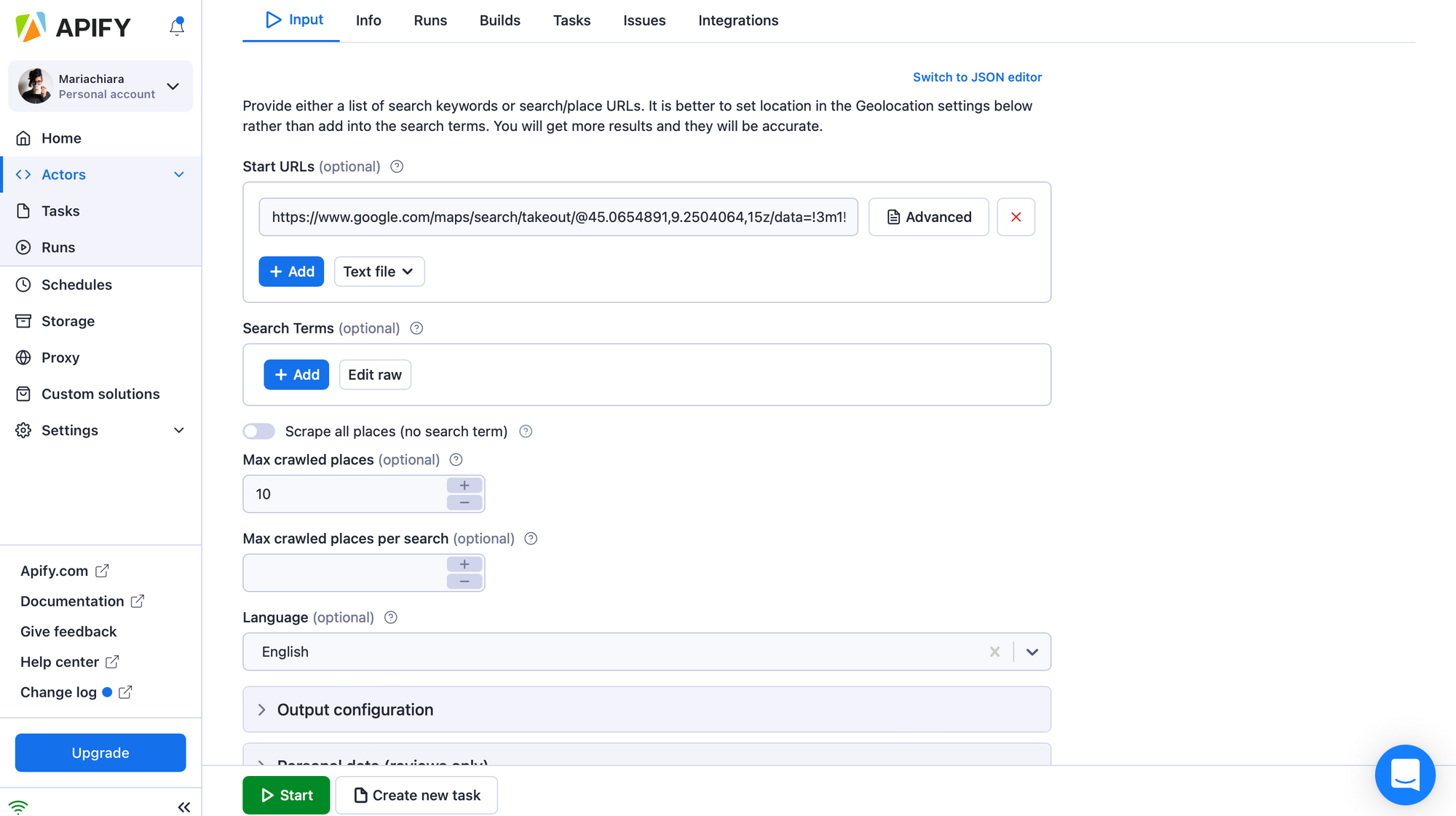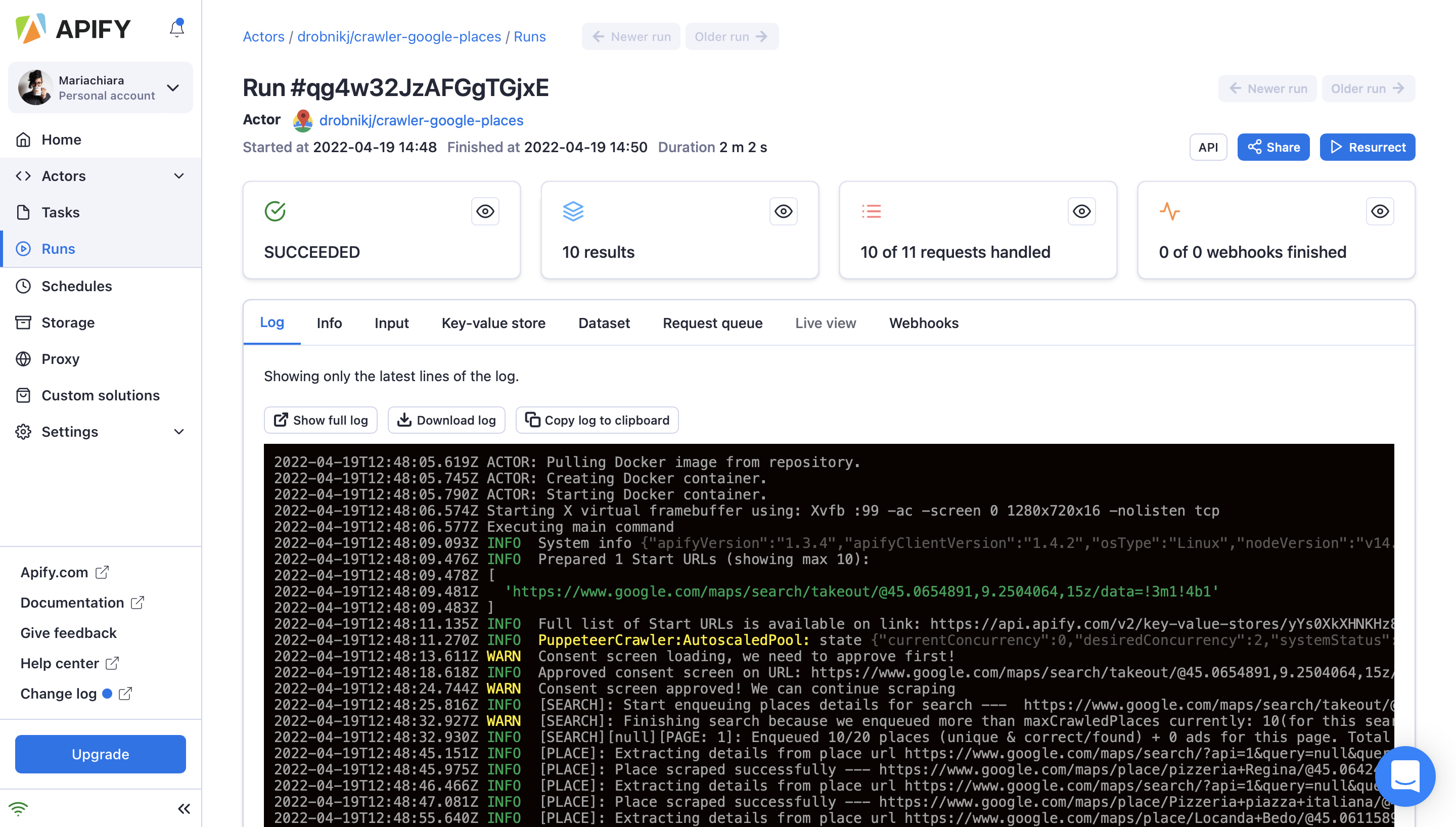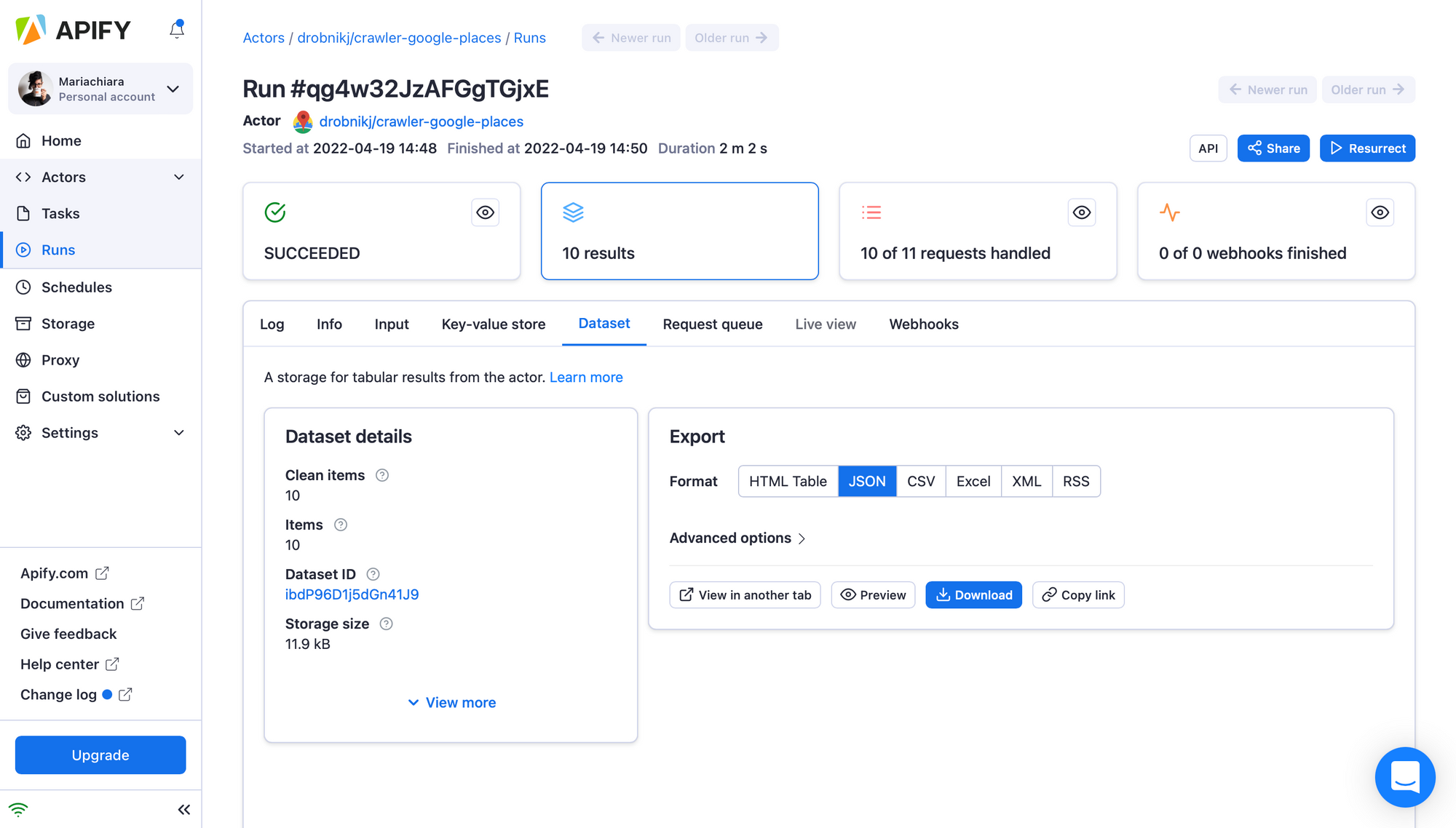How Easy is It to Get Blacklisted From Google Maps Form Webscraping
Guide to scraping reviews, popular times, photos and more from Google Maps. Go beyond the limits of the official API and get unlimited results
Over the duration of its existence, which rounds up to roughly 15 years, Google Maps has transformed from a simple navigation tool to an app with a whole different level of promotion and opportunities for both individual users and big and small fish in business. The marketing influence of a simple map on the web has evolved to the point where every type of business, from e-commerce to pharmaceuticals, wants to have their name featured and ranked as high as possible in the Google Maps ratings.
We're going to show you how to use the Apify platform and a ready-made tool called Google Maps Scraper to extract data from Google Maps. Apify's scraper, or crawler, will enable you to extract Google Maps data directly from the website, including reviews, photos, and popular times.
To learn how to achieve this, you can follow a step-by-step guide here or head over to our short YouTube tutorial 📹🔴▶️
Google Maps usage statistics
We don't have to tell you how popular and ubiquitous using Google Maps is. Let's just take a quick look at some statistics to get a clear picture of what we're about to scrape.
For regular users
- In 2020, Google Maps was the most downloaded map and navigation app in the United States, despite being a standard pre-installed app on Android smartphones.
- Since 2015, Google has claimed that Google Maps has "more than a billion users" (even in the middle of the COVID-19 pandemic).
- ComScore's survey on Android found that Google Maps was the 7th most popular app among U.S. Android users in November 2020, despite the limitations of the pandemic.
- 2019 RBC Capital Markets report estimates that Google has seized 81% of the navigation market.
For businesses
- There's data on 1 164 749 companies that use Google Maps, with the app most often being used by companies with 10-50 employees and $1-10 million in revenue.
- 86% of people look up the location of a business on Google Maps before visiting and 90% of them aren't sure what business they'll use before they start with their search.
- It's no wonder, because 76% of consumers trust online reviews as much as they trust personal recommendations, which gives data on Google Maps immense powers over decision-making.
- The restaurant industry is a case in point here of how accurate local listings have become crucial for business development and visibility on the market, with 94% of American customers being influenced by online reviews of a restaurant they're about to visit.
How to use data extracted from Google Maps
Since it is an unprecedented case of merging the results of local search and listings of local businesses, it wouldn't be an overstatement to say that without a presence on Google Maps, a local business can count itself as pretty much non-existent. The most obvious way to use Google Maps results on a bigger scale would be to use it for automating the extraction of contact data such as phone numbers, emails, addresses, and website names of companies in the general vicinity. How can this gathered contact data be used? Here's just a couple of examples:
- creating a potential customer base. Collecting B2B leads data can be confidently called a monkey job that doesn't inspire much creativity or work motivation. That's what automated solutions are for.
- searching and analyzing the businesses who offer similar services or products to yours and comparing your and your competitors' offers.
- scraping reviews for positive/negative sentiment, quality of service, and specific phrases. In this way, you can tackle the fake reviews.
- finding where to buy the exact product and choosing the best option out of the pool of results.
- analyzing geospatial data with Google Maps data scraper for scientific or engineering work. For instance, when working with satellite data and geolocation for climate research and calculation of global distances on Earth to cyclone location. Or to analyze the territorial changes before and after an attack, as has been thoroughly done in this Bellingcat study
- Last but not least - benefit from big data, even if you're a small player. Above all, this has greater opportunities for expanding your business or organization as well as developing a working market strategy.
Here, your imagination is the limit of how you can use that data. However, in order to create a whole catalog of things you may need a great amount of data from Google Maps. And that is not as easy with the official Google Maps API (more on that further). To achieve that completeness of data you can either combine the official Google Maps scraper results with some other organization's catalogs, or use a completely different Google Maps data extraction tool that can provide a full range of results, such as our Google Maps Scraper.
Is it legal to scrape Google Maps?
Anybody can get information from publicly available websites - web scraping is just a faster and more efficient way to get the job done. It is therefore legal, as long as you respect the personal data and copyright laws. To learn more about the legality of web scraping, read our blog post on the subject.
What about the official Google Maps API?
Some massively popular websites such as Facebook, Instagram, Twitter, Amazon do provide APIs for their users to access part of their data, etc. Google Maps is among these sites, it provides Place API for its users. However, to use the Google Places API, you need to set up an account first and create your API key, and their method charges you with a pay-as-you-go pricing model. This wasn't always the case, but ever since Google Maps API put considerable limitations on scraping their data back in 2010, it has prompted businesses and developers around the world to find other, easier ways to scrape the website.
That being said, the official Google Maps Places API can be an adequate option for many cases, but crawlers such as Google Maps Scraper can provide the results from all of the following input parameters as a part of free trial:
- Unlimited results (Google Places API enforces rate limits and IP quotas).
- Popular place times histogram (not available in the official API).
- All place reviews (Google Places API enforces rate limits and IP quotas).
- All place photos (Google Places API enforces rate limits and IP quotas).
If you only want to scrape reviews from Google Maps - say for monitoring your competition or market research - you might like to try our Google Maps Reviews Scraper instead.
You can really see the horizon of data extraction opportunities widen with the limitations thrown out of the window. Now let's walk you through every step of the process of scraping Google Maps with our Google Maps Scraper.
Step-by-step guide to scraping Google Maps
Find your actor
1. First, go to the actor's page, and click the Try for free button. You will be redirected to Apify Console, which is your workspace to run tasks for your scrapers. If you already have an Apify account and are logged in, go to Step 3.

Sign up
2. If you are not signed in, you'll find yourself on the sign-up page (if you are already signed in, skip to Step 3). Sign up using your email account, Google, or GitHub. You will be redirected to the scraper's page on your Apify Console.

Input
3. Let's say you are hungry and you want to explore takeout options. Enter your search terms and parameters such as the geolocation and a maximum number of results. Alternatively, you can open Google Maps in a separate window, search for "takeout" and, once Google Maps provides you with results, copy the URL and paste it into the first input field.


4. Once you are all set, click the Start button. Notice that your task will change its status to Running, so wait for the scraper's run to finish. It will be just a minute before you see the status switch to Succeeded.

Results
5. You can see the search created 10 results. Move to the Dataset tab to see the results of your scraping. Explore the Dataset tab containing your scraped data in many formats, including HTML table, JSON, CSV, Excel, XML, and RSS feed.

6. Preview the data by clicking the Preview button or viewing it in a new tab if the dataset is too large. You can choose to download it onto your computer for further use as spreadsheets or in other apps and your projects.

One slight caveat is that it's preferable to scrape such a huge website as Google Maps by using proxies, that way it's faster and more efficient. Because of this, if you get serious about scraping Maps, it will eventually start costing you at least a little cash, but in the meantime, you get one month of Apify Proxy free as soon as you sign up at Apify. So hurry up and start your first month with our free Google Maps Scraper on Apify Store.
Finally, if this particular scraper seems too advanced for your needs, have no fear. There is also Easy Google Maps Scraper. We think you'll agree with us that it is...well, easy!
Whichever of our Google Maps scrapers you choose to youse, don't forget to send us a tweet if you do something interesting with all that data!
Source: https://blog.apify.com/step-by-step-guide-to-scraping-google-maps/
0 Response to "How Easy is It to Get Blacklisted From Google Maps Form Webscraping"
Post a Comment